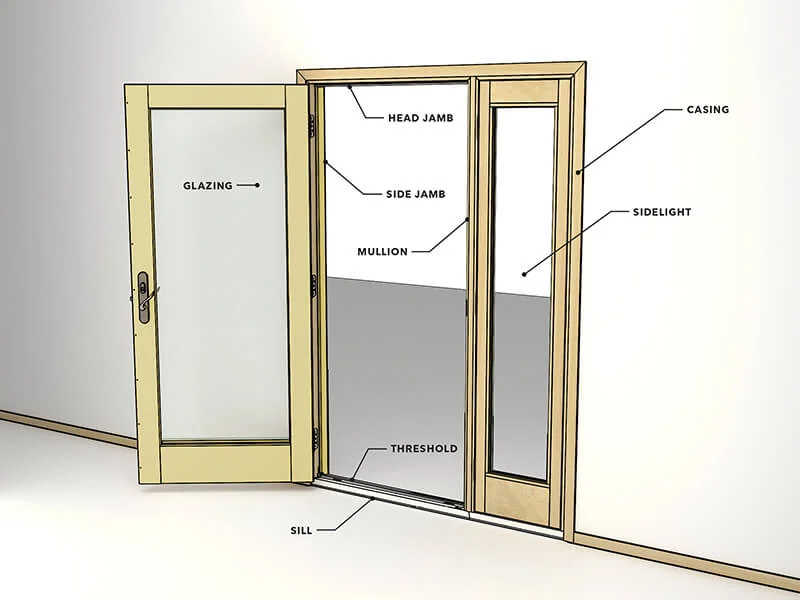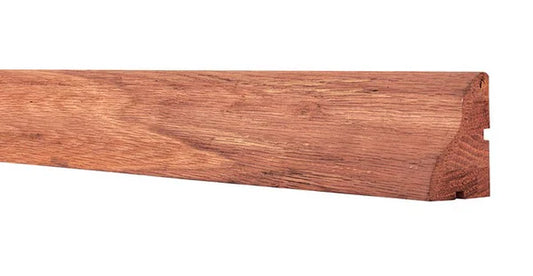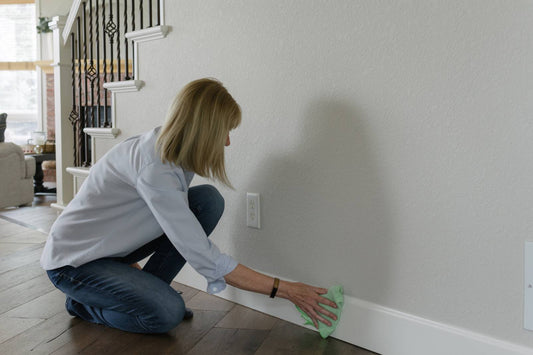When it comes to home improvement or construction, one of the crucial yet often overlooked components is the door lining. Whether you're installing traditional swing doors or modern bi fold doors, getting the door lining sizes right is essential for both function and aesthetic. Misjudging the measurements can lead to installation issues, poor door performance, and even long-term damage.
This guide aims to explain everything you need to know about door linings, focusing specifically on door lining sizes, and how they relate to various door types including bi fold doors.
What is a Door Lining?
Before diving into the specifics of door lining sizes, it's important to understand what a door lining is. A door lining is the frame within which the door is hung. It provides structural support and gives the door something to be securely attached to. In timber-framed properties, the door lining ensures that the weight of the door is evenly distributed and that the door can be opened and closed smoothly.
Door linings are commonly used in interior spaces and are typically made from softwood or MDF. Unlike door frames which might be used for external doors and are often more robust, door linings are generally simpler and suited to internal use. The right door lining size ensures proper fitting of the door, whether it is a solid wood door, a hollow-core door, or a more complex bi fold door.
Standard Door Lining Sizes in the UK
In the UK, there are a few standard door sizes that most manufacturers follow. Therefore, door linings are generally designed to match these sizes. The internal door widths are typically 610mm, 686mm, 762mm, 838mm, and 926mm. Each of these standard widths will require a matching door lining size that allows enough space for the door leaf, as well as some clearance for movement and hinges.
The thickness of the door lining also matters. Most commonly, the door lining thicknesses are either 108mm or 133mm, depending on the thickness of the wall they’re being installed into. Some walls with thicker plasterboard or deeper stud partitions may need custom sizes. A wider door lining allows for finishing with architraves and better structural support, which becomes particularly important for bi fold doors, as these often need added support due to their folding mechanism.
How to Measure Door Lining Sizes
To get the correct door lining sizes, you need to measure three key dimensions: the width, the height, and the thickness. Start by measuring the width and height of the door opening in millimetres. Make sure to take measurements at three points — top, middle, and bottom — to account for any irregularities in the wall.
Next, measure the depth or thickness of the wall where the door lining will be installed. This ensures that the lining sits flush with the wall, avoiding gaps that would otherwise need to be filled or covered with trim. A perfectly measured door lining size not only makes installation easier but also enhances the final appearance.
The Relationship Between Door Lining Sizes and Door Sizes
It’s a common misconception that the door size and the door lining size are the same. In reality, the door lining has to be larger to accommodate the door itself, clearance for the hinges and latch, and space to allow the door to open and close without friction. Typically, around 3mm clearance is required on each side of the door, along with 2mm at the top and up to 10mm at the bottom, depending on flooring and thresholds.
For example, if your door size is 762mm by 1981mm (which is a standard UK door size), your door lining needs to be wider and taller to fit the door plus the required clearances. This becomes even more critical in the case of bi fold doors, which might require a larger or reinforced lining depending on the number of panels and the weight of the doors.
Door Lining Sizes for Bi Fold Doors
When dealing with bi fold doors, the door lining size becomes even more important. Bi fold doors are designed to fold back on themselves, usually on a track system. This mechanism means that precise measurements are critical. Any error in the lining size can cause the doors to bind, not fold correctly, or become misaligned over time.
Bi fold doors often require additional structural support, especially if they are wider and span across larger openings. In such cases, door linings must not only match the door leaf sizes but also be robust enough to handle the operational stress. A reinforced lining or frame may be needed. Additionally, because bi fold doors are more sensitive to alignment than standard doors, the door lining must be perfectly square and level.
If you are installing internal bi fold doors that open into a room or connect spaces like kitchens and dining areas, the door lining must accommodate the folding mechanism without impeding the doors. This may require a lining that is slightly deeper or wider than traditional sizes.
Custom Door Lining Sizes
Although standard sizes work in most new-build homes, many older or custom-built properties feature non-standard wall thicknesses and door sizes. In such cases, it’s necessary to go for custom door lining sizes. Joiners or door manufacturers often offer made-to-measure linings to fit these spaces. When ordering custom linings, make sure you provide exact measurements, including allowances for floor finishes and architraves.
Also, when planning for bi fold doors in custom openings, it is recommended to consult both the door manufacturer and a qualified installer. Some bi fold doors come with their own frame systems, but if they require a traditional door lining, accurate sizing becomes even more vital.
Choosing the Right Material for Door Linings
Door linings are available in a variety of materials, each with its own pros and cons. Softwood is the most common and cost-effective option. It's easy to cut, shape, and install. Hardwood linings, while more expensive, offer better durability and a premium look. MDF linings are also available and are often pre-primed for painting.
For bi fold doors, especially if they are used frequently, a harder wood or engineered wood might be a better choice due to its strength and stability. Regardless of the material, always make sure the lining is suitable for the weight and usage of the door it will support.
Finishing the Door Lining
Once you have installed the correctly sized door lining, the finishing stage involves adding architraves, sanding, painting or staining, and fitting the door. The architrave not only adds a decorative touch but also conceals any gaps between the wall and the lining. It's important that the architrave fits neatly against the door lining, which will only happen if the lining was measured and cut accurately.
With bi fold doors, finishing can be slightly more complex. Since these doors fold, the alignment of the track and hinges must be precise, and the door lining should be perfectly level and plumb to ensure smooth operation.
Final Thoughts
Choosing the right door lining size is a crucial part of any door installation project, whether you’re working on a traditional swing door or more sophisticated bi fold doors. Standard door lining sizes are usually sufficient for most interiors, but custom options are available when needed. Proper measuring, material selection, and professional installation ensure a long-lasting, aesthetically pleasing result.
Ignoring the importance of door lining sizes can lead to practical problems, especially with doors that have more complex operations like bi fold doors. Take the time to understand the specifications of your project and choose the appropriate door lining to match. This small detail can make a big difference in the functionality and appearance of your interior spaces.





